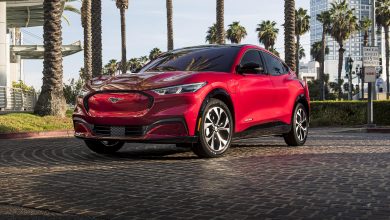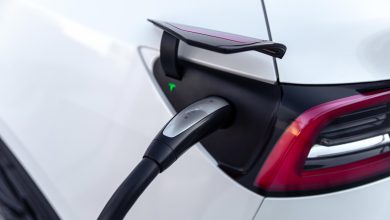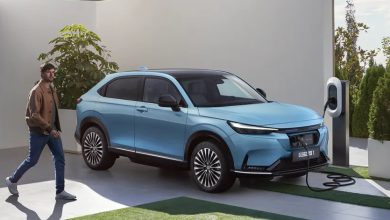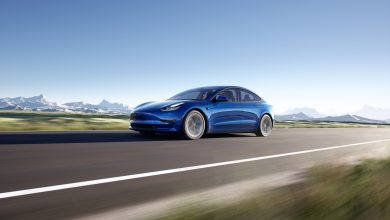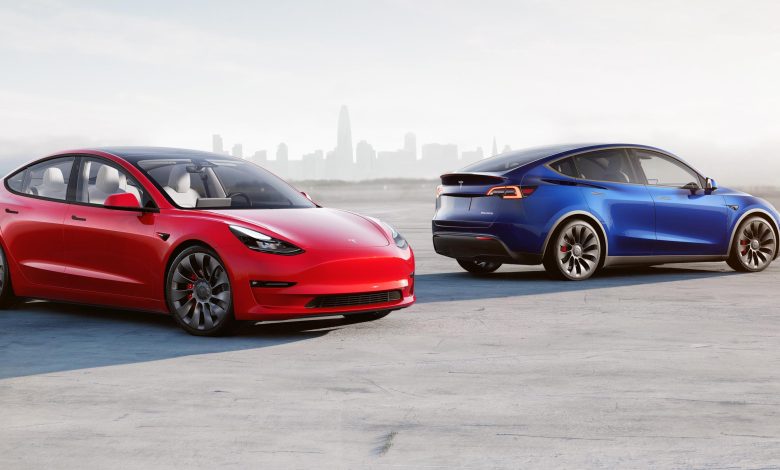
The electric vehicle tax credit keeps changing and the Treasury Department has issued a new guideline on the vehicles that will qualify. The new guidelines have seen more EV models drop off the list. However, some of the popular EVs still qualify, according to the April 17 announcement.
The new rule still set the maximum tax credit customers can get on eligible EVs at $7,500. However, some models will only qualify for half that amount. Only vehicles made by the top EV automakers in the United States namely Ford, General Motors, Stellantis, and Tesla qualify for the $7,500 tax credit this year.
The new tax credit guideline issued by the Treasury Department will last until 2032. Some gas-electric hybrid vehicles will be eligible for half ($3,750) of the tax credit while drivers that purchase handpicked used EVs this year can get up to $4,000 credit.
“The great news here is that based on [first-quarter 2023] sales volumes, over 90% of vehicles that were eligible for the credit before April 18 are still eligible, with the vast majority eligible for full credit,” said Albert Gore, executive director of the Zero Emission Transportation Association based in Washington, D.C.
Full list of EVs that qualify for the revised tax credit

Customers that purchase qualifying vehicles can have the tax credit applied to their 2023 return. From 2024, drivers can transfer the tax credit to a dealership, thereby lowering the purchase price of the vehicle. The vehicles that are eligible for the tax credit have a sticker price below $55,000 for sedans and less than $80,000 for vans and SUVs.
Below are the vehicles that qualify for the full $7,500 tax credit.
| Make, Model, and Version | Year | Lowest MSRP |
| Cadillac Lyriq | 2023-2024 | $58,590 |
| Chevrolet Blazer EV | 2024 | $44,995 |
| Chevrolet Bolt EUV | 2022-2023 | $27,800 |
| Chevrolet Bolt EV | 2022-2023 | $26,500 |
| Chevrolet Equinox EV | 2024 | $30,000 |
| Chevrolet Silverado EV | 2024 | $39,900 |
| Ford F-150 Lightning (standard and extended range) | 2022-2023 | $59,974 |
| Tesla Model 3 (performance) | 2022-2023 | $52,990 |
| Tesla Model Y (all-wheel drive) | 2022-2023 | $49,990 |
| Tesla Model Y (long-range) | 2022-2023 | $52,990 |
| Tesla Model Y (performance) | 2022 | $56,990 |
| Chrysler Pacifica Plug-in Hybrid | 2022-2023 | $50,795 |
| Lincoln Aviator Grand Touring | 2022-2023 | $70,190 |
Below are all the vehicles that qualify for partial $3,750 tax credit.
| Make, Model, and Version | Year | Lowest MSRP |
| Ford E-Transit | 2022-2023 | $49,575 |
| Ford Mustang Mach-E (standard or extended range) | 2022-2023 | $45,995 |
| Ford Escape Plug-in Hybrid | 2022-2023 | $40,500 |
| Tesla Model 3 (standard range rear-wheel drive) | 2022-2023 | $41,990 |
| Jeep Grand Cherokee PHEV 4xe | 2022-2023 | $60,360 |
| Jeep Wrangler PHEV 4xe | 2022-2023 | $54,735 |
| Lincoln Corsair Grand Touring | 2022-2023 | $53,885 |
Vehicles from European and Asian companies including Volvo, BMW, Hyundai, Nissan, and Volkswagen that previously enjoyed tax credits have now dropped off the list. Some analysts are calling it a win for automakers in the United States.
In the stricter guidelines, only EVs and plug-in hybrid vehicles made in North America which have most of their batteries and critical minerals sourced in the United States or the country’s close trading partners qualify for the full tax credit.
The potential impact of the revised tax credit guidelines
Available data from Kelley Blue Book shows that the demand for EVs is growing. The average price of new EVs sold rose from $58,385 in February to $58,940 in March. Experts say it is important to monitor the affordability of EVs as the United States tries to reel away from dependence on fossil fuels. The more expensive EVs become, the harder it will be for drivers to make the transition.
The tougher guidelines are intended to boost the creation of jobs in the United States by luring foreign automakers to move their supply chain to the United States. While the move is well-intentioned, it will limit the choices of drivers that are relying on tax breaks to make EVs more affordable. Also, the move is likely going to further anger European governments whose automakers were all dropped from the list.
The tougher restrictions are also a way of countering China’s growing dominance of EV battery and essential minerals production. An official of the administration said the new guidelines are “clear and workable” and better represent the domestic-sourcing requirements imposed by Congress when the Inflation Reduction Act was passed in August 2022.
The list of eligible vehicles may change in the future
While some consumers and automakers may not be happy with the April 17 guidelines from the Treasury Department, the rules may change in the coming years as foreign automakers like Nissan and Hyundai build manufacturing facilities in the United States.
After the Monday guidelines were released, Hyundai told Reuters that it “will utilize key provisions in the Inflation Reduction Act to accelerate the transition to electrification”. Nissan also said it is “working closely with suppliers and are hopeful that Leaf will qualify for at least partial credit in the future”.
In the new guidelines, EVs need to meet two major requirements to be eligible for full tax credit namely a battery component requirement and a critical mineral requirement. According to the battery component requirement, a certain percentage of the value of the battery components must be made or assembled in North America.
Also, the critical mineral requirement dictates that a certain percentage of critical minerals value—including copper, graphite, nickel, and lithium—must be extracted or processed in the U.S. or countries it shares a free-trade agreement with.
At the moment, the U.S. has free trade agreements on critical minerals with 21 countries. This includes Singapore, Peru, Panama, Oman, Nicaragua, Morocco, Mexico, South Korea, Jordan, Japan, Israel, Honduras, Guatemala, El Salvador, Dominican Republic, Costa Rica, Colombia, Chile, Canada, Bahrain, and Australia.
These requirements will change over several years. For example, the percentage of critical minerals will begin at 40% in 2023 and grow to 80% by 2027. In the same manner, battery components will start at 50% and grow up to 90% by 2028.
Republicans have criticized President Biden’s push for electrification of the mobility sector, citing the high cost of EVs. According to the Republicans, the Biden administration’s push to coax Americans to quit fossil fuel vehicles neglects the economic realities of the ordinary people.
“The average price of an EV was roughly $65,000 last year, more than the household income of 46% of American families,” said West Virginia Sen. Shelley Moore Capito in reaction to the proposed EPA guidelines a week ago.
Related
Ford Mustang Mach-E and E-Transit to Lose 50% of Tax Credits
Biden And EU Leader In Talks That Could Expand EVs That Qualify For U.S. Tax Credits

